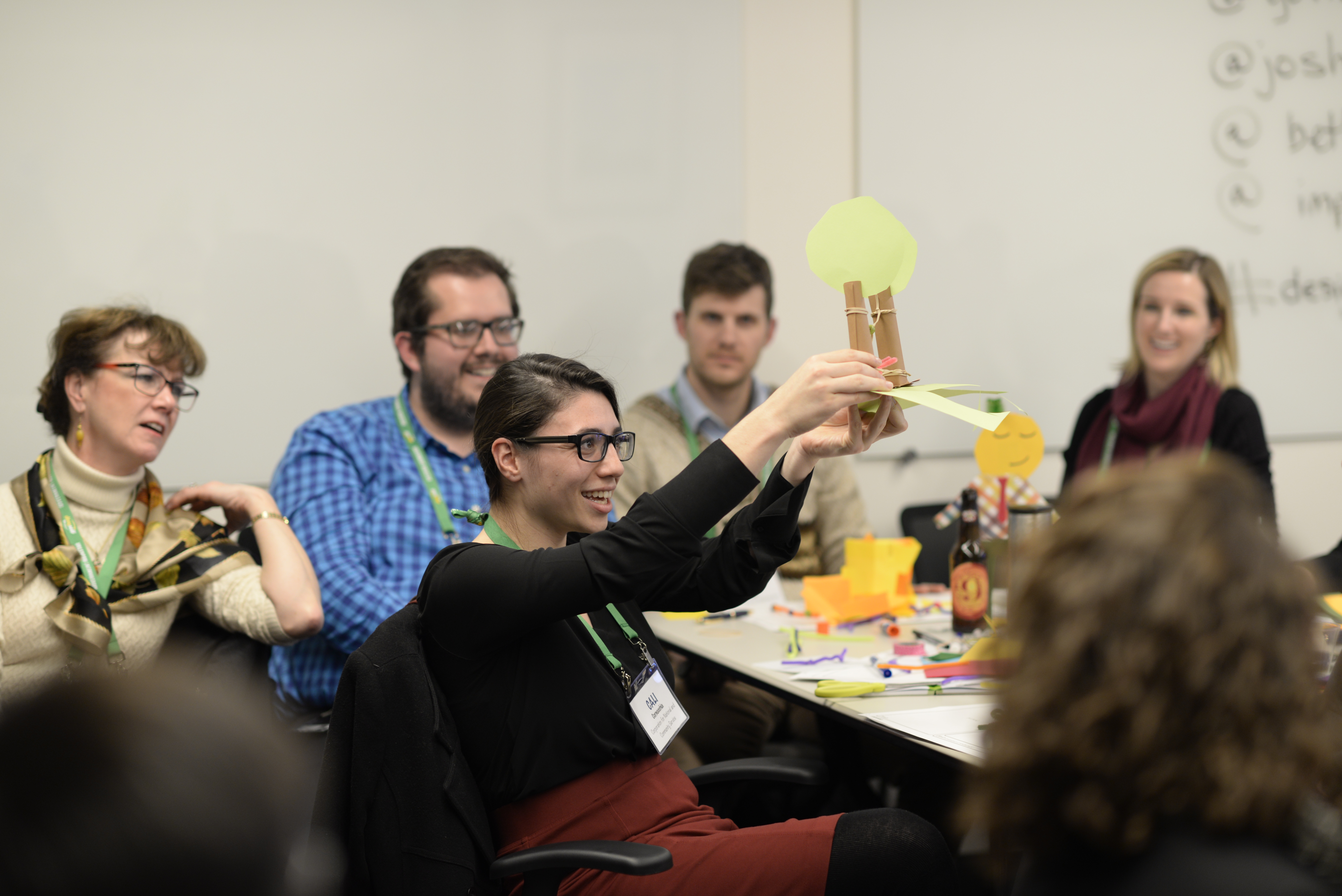As part of our learning series leading up to the Next Generation of Government Summit, we spent an evening with Joshua Marcuse, Senior Advisor for Policy Innovation at the Department of Defense, and Beth Flores, a former DoD employee who now runs Impact Hub D.C.
We only had an hour but it was enough time for them to give us an awesome, hands-on introduction to design thinking – a way of solving problems with human-centered design solutions. The whole evening was inspiring, challenging, and lots of fun.
Jealous? Don’t be. If you have a govie buddy (or really any buddy, but you know we love public servants), you can participate in your own crash course to design-thinking.
Walk through the following 9 steps to get an interactive, quick introduction to design-thinking:
1. Practice empathy. Think of a problem you and your partner might have shared. If you’re both in government, a good test could be “What did you really need when you started your career in public service?” Use that question to guide you through questions. Ask your partner about her experience and the problems she encouraged. Get them to walk you through it – what they did and how it felt when they did it.
2. Dig deeper. I know you just talked to your partner, but do it again. During your first round, you probably heard a lot of “I did this” statements that were very concrete. Alternatively, you might have heard some very vague and broad needs, such as “I really just wanted to save the world.” You want to hit somewhere in the middle, to really understand the specific feelings that accompanied actions and wants.
To dig deeper, Flores suggested to “persistently ask why.” Why did you do that? Why did you want that? Why did you feel that way? Ask until the person truly runs out of answers to get into the deeper meaning behind their experiences.
3. Capture findings. Now that you’ve really talked to your partner, take a few minutes to collect your thoughts. By yourself, consider what you discovered about your partner’s experience. What were the human needs he or she expressed? From that, what new insights or conclusions can you draw about your partner?
4. Take a stand. Based on your findings and conclusions, write a “point of view statement” about what you think is a compelling and worthwhile need of your partner. The sentence should follow a structure similar to “[Partner’s name] needs a way to [user’s need] because [insight].”
Use that statement to describe a partner’s deep, human need and why they had it in the first place. It doesn’t have to be something your partner actually said. “You should use your imagination and extrapolate what might going on beneath the service,” explained Flores.
5. Sketch. Now let’s get to what you probably thought design was all about – art. Sketch at least 5 ways to meet the other person’s needs, based on the point of view statement you just wrote. As you draw, the key is to go for volume, not artistic quality. You want to generate as many potential solutions as possible so you have more options for your partner.
6. Share your solutions. Even if your sketches look more like a Picasso than a Monet, share them wiht your partner. Walk them through the solutions you visualize and ask them to comment on each. Does it meet their needs? Is it something they want? How does it make them feel?
The purpose isn’t actually to have your partner choose a winner. You’re still trying to learn, but presenting your ideas gives you a new way to explore your partner’s needs as they react to your sketches.
7. Reflect and generate a new solution. Based on your conversation and the feedback you get from your partner, create a new solution. This could be a totally new product or it could be an improvement on one solution you already presented. Whichever route you choose, make sure to incorporate what you’ve learned in the sharing phase.
8. Build your solution. Now it’s time to get truly hands-on. This doesn’t have to be anything fancy. Grab a few pippettes, paper towels, and cardboard to make a 3D model of what you’re envisioning.
9. Share (again). Human-centered design is all about iteration – constantly seeking feedback and using it to improve your designs. So even though you think you’ve really nailed it with your new solution, be brave enough to ask your partner one more time if it’s really what meets their needs. Even if they say yes, ask them if there is anything you can do to make it even better. You’ll be surprised at how much new information you will hear once your partner has the chance to actually interact with your solution.
When you’re done with this exercise, you should have a good understanding of what design-thinking is about (hint: it’s about focusing on feelings and needs of real humans, and then testing your conclusions). If you want to learn even more about what design thinking means and how to leverage it to transform your agency, be sure to join us this summer at NextGen!





I love it is great.